 Taiwanese 130 ton Special Forces midget submarine design
Taiwanese 130 ton Special Forces midget submarine design
Feedback and further info welcome.
The recent uncertainty of US foreign policy regarding the sovereignty of Taiwan (Republic of China) reminds us the Taiwanese Navy’s embattled acquisition program. Western governments and submarine builders have been unwilling to supply submarines through fear of annoying China which strongly objects to any increase in Taiwanese naval capability. Consequently the last submarines purchased were two Dutch Zwaardvis Class diesel-electric attak boats in the 1980s. These are moderately capable but greatly outnumbered and increasingly outclassed by China’s rapidly modernizing submarine fleet. The Zwaardvis’ (known as Hai Lung (Sea Dragon) Class locally) are joined by two vintage ex-US Navy GUPPY type fleet boats. These were supplied with the torpedo tubes deactivated but apparently they have been brought back into action.
From Taiwan’s perspective, they desperately need modern submarines. In 2001 the US Government announced the sale of eight diesel-electric submarines to Taiwan but because the US does not build conventionally powered submarines any more US yards would have had to work with foreign partners. There was concern from US submarine builders that this might reveal US nuclear submarine technology so, combined with a lack of enthusiasm from Western countries who do build conventional submarines, the deal as never materialized. Taiwan’s own ship building industry is developing but they do not have experience or capabilities to indigenously develop full sized submarines.
CLICK for high-resolution image:

More recently in 2014 the HARD ROC 2.0 report by the US Strategic and Budget Assessment Center recommended that Taiwan instead concentrate on building a large fleet of some 42 midget submarines. This 350 ton design is most likely in response to this.
From HARD ROC 2.0 FULL REPORT
The first critical element of Hard ROC 2.0 would be a “guerrilla” sea denial campaign designed to pose a credible threat to the PLA Navy for as long as possible. Indeed, Taiwan does not need to exert absolute control over the waters surrounding the island in order to succeed; it must simply be able to identify and successfully attack a significant portion of any approaching blockade or invasion fleet. To this end, Taiwan should place greater emphasis on midget submarines, land-based coastal defenses, and offensive mining. As a more militarily effective alternative to acquiring eight large air independent propulsion (AIP) submarines, Taiwan could acquire a fleet of 42 midget submarines, similar in their displacement (roughly 120 tons) to those currently possessed by countries such as North Korea and Iran. Such a midget submarine fleet would require a comparable number of personnel as eight AIP submarines but could be much more easily produced indigenously and at a fraction of their cost. In addition to targeting enemy surface combatants directly and inducing the PLA Navy (PLAN) to dedicate a disproportionate share of its fleet to anti-submarine warfare, Taiwan’s fleet of midget submarines would serve as a maritime ISR picket and provide vital warning and targeting data for shore-based anti-ship cruise missile (ASCM) batteries.
The Taiwanese ship building industry has responded with design proposals for midget submarines. This example was displayed at the Kaohsiung International Maritime Shipbuilding and Defense Industry Exhibition, September 2016.
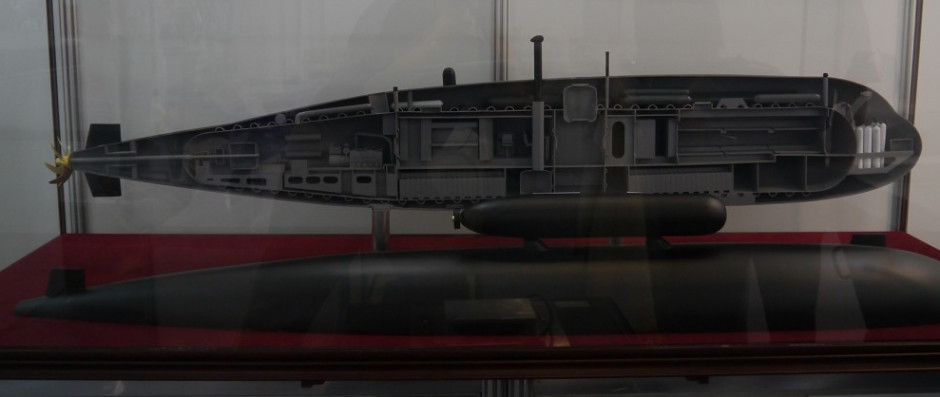
Model on display at Kaohsiung International Maritime Shipbuilding and Defense Industry Exhibition, September 2016. Photo Zhu Ming, from upmedia.mg
The ultimate book of Special Forces subs Covert Shores 2nd Edition is the ONLY world history of naval Special Forces, their missions and their specialist vehicles. SEALs, SBS, COMSUBIN, Sh-13, Spetsnaz, Kampfschwimmers, Commando Hubert, 4RR and many more.
Check it out on Amazon
Design
The 350 ton midget submarine is a sailless design with X-arrangement aft control surfaces. A diver lock-out chamber for Special Forces is situated amidships and two SDVs (Swimmer Delivery Vehicles) can be mounted externally, one on either side of the boat. The two torpedo tubes are mounted externally to the pressure hull, firing out through large hatches in the front of the casing.
CLICK for high-resolution image:
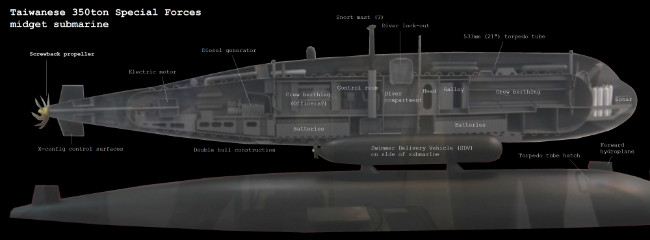
At first sight the double-hull construction is reminiscent of the Dutch submarines operated by Taiwan (they are themselves based on the US Navy’s revolutionary USS Albacore experimental submarine which was itself double-hulled). However, on closer inspection it is apparent that the external reinforcing is constructed from piping cut in half and welded to the hull to form D-shaped hollow reinforcing bands. This is likely inspired by a method pioneered by GSE Trieste (Giunio Santi Engineering, formally Maritalia) in Italy. In the 1970s Dr Giunio Santi invented the Gaseous Oxygen stored in the Toroidal pressure hull (GST) design where the hull was made up of rings of pipe, welded together. This has since matured to the D-shaped pipe reinforcing described above.
This does not suggest that GSE is involved in the design of course. The overall boat does not look particularly like GSE designs.
The reinforcing tubes can be used to store oxygen for an Air Independent Power (AIP) system. However, in this design it is more likely used to store water ballast. This is a space efficient design which may also be used on some Dry Combat Submersibles (DCS).
Specifications (Provisional)
Displacement: 350 tons submerged
Length: approx 35-40 m (115-130ft)
Beam: approx 4.5 m (14.75ft)
Speed: TBC
Operating depth: 100 m (330ft)
Crew: TBC
Endurance: TBC
Armament: 2 x 533mm (21") torpedo tubes mounted externally (no reloads)
Payload: 2 x SDVs (undetermined type)
History
In the 1960s Taiwan purchased two SX404 midget submarines from Italian manufacturer Cos.Mo.S. These could carry two 2-man CE2F Chariots externally, one each side of the hull. The boats were decommissioned in 1973 when larger ex-US Navy submarines became available.
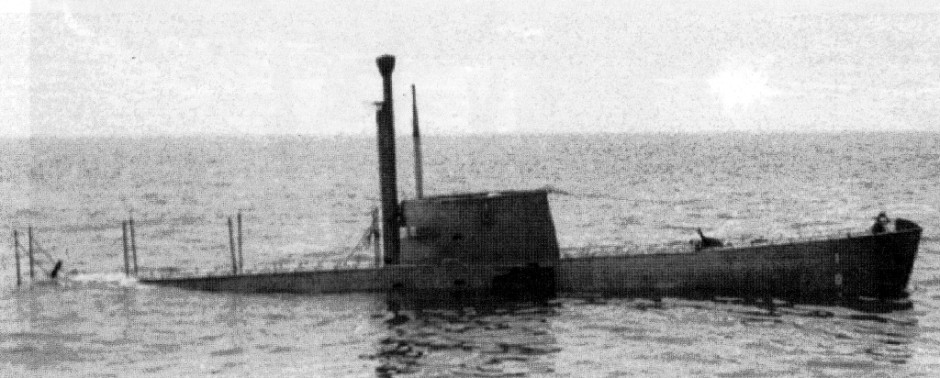
SX404
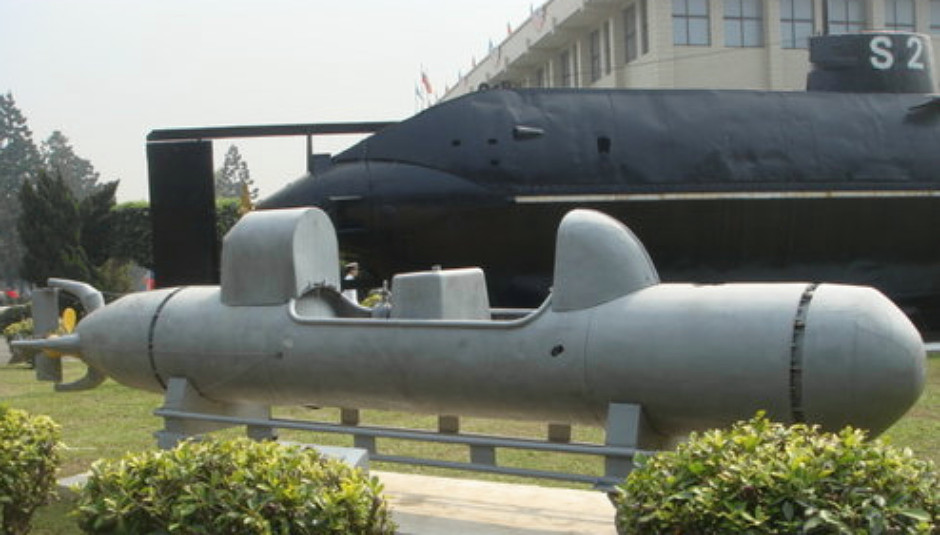
Italian made Cos.Mo.S CE2F on display in front of a SX404
Related Articles

 HDS-500 Midget Submarine
HDS-500 Midget Submarine

 Maritalia GST-23+ Midget Submarine
Maritalia GST-23+ Midget Submarine

 Crocodile 250 Midget Submarine
Crocodile 250 Midget Submarine

 Cos.Mo.S CE4F 4-man SDV
Cos.Mo.S CE4F 4-man SDV

 Vogo ASDV-800 Dry Combat Submersible
Vogo ASDV-800 Dry Combat Submersible


 USN Navy SEAL's UOES3 (Button 5.60) Dry Combat Submersible (DCS)
USN Navy SEAL's UOES3 (Button 5.60) Dry Combat Submersible (DCS)

 COMSUBIN's submersible boat
COMSUBIN's submersible boat

 Cos.Mo.S CE2F chariot
Cos.Mo.S CE2F chariot

 Comex Sagittaire midget submarine
Comex Sagittaire midget submarine















 World survey of AIP submarines
World survey of AIP submarines

 North Korean Gorae Class SSB
North Korean Gorae Class SSB

 Barbel Class - the last front-line diesel boats int the US Navy
Barbel Class - the last front-line diesel boats int the US Navy

 Iranian Nahang Class midget sub
Iranian Nahang Class midget sub

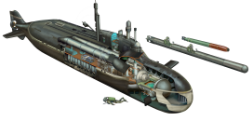 Piranha Class (LOSOS) midget sub
Piranha Class (LOSOS) midget sub

 MSV-75 midget sub design
MSV-75 midget sub design

